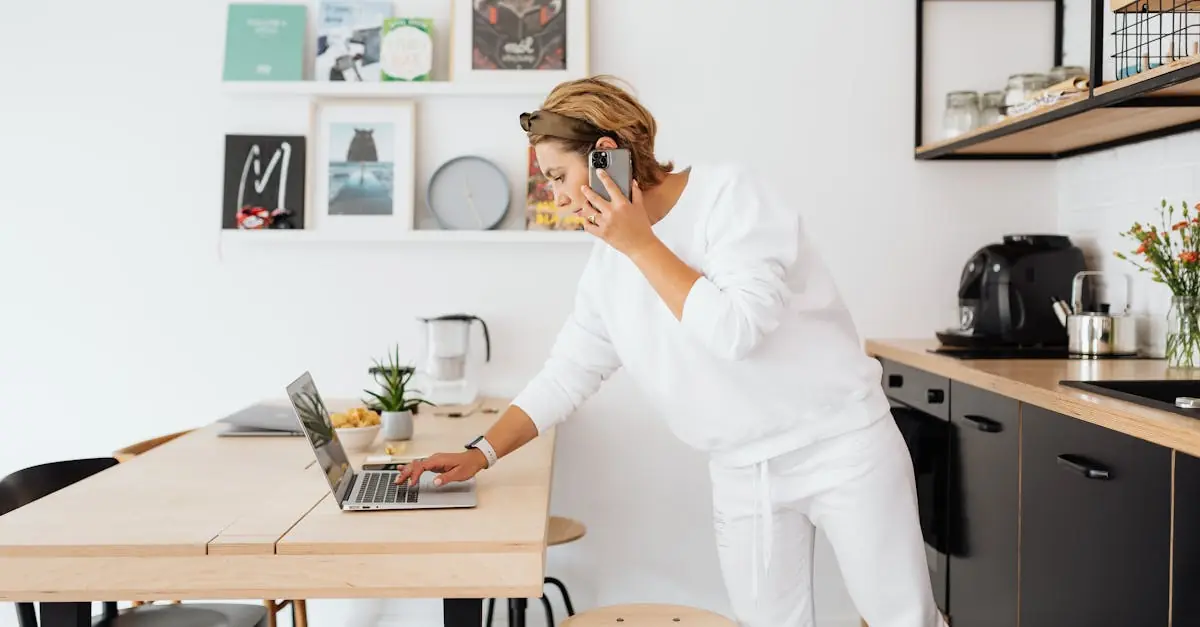Table of Contents
ToggleEver feel like your iPhone’s eavesdropping on your conversations? You’re not alone. Many people joke that their phones have become their personal spies, always ready to serve up ads for that random thing they whispered about last week. If you’re tired of your phone acting like a nosy neighbor, it’s time to take action.
Understanding the Issue
Concerns about privacy arise frequently among iPhone users. Many believe their devices eavesdrop on conversations, leading to unwanted targeted advertisements.
Privacy Concerns with Smartphones
Smartphones collect significant amounts of user data. Users often feel uneasy about how this data can be utilized. Features like voice-activated assistants raise alarms regarding privacy. Users mention a loss of control over personal information. Reports from various sources emphasize the prevalence of data collection practices. Studies indicate that individuals desire more transparency about their smartphone usage.
How Devices Listen to Us
Smartphones utilize built-in microphones to detect voice commands. Users interact with voice assistants like Siri for convenience. Background listening allows devices to recognize commands even in muted environments. Data indicates that these recordings may not always be deleted. Specific app permissions grant access to microphone usage. Users must actively manage these settings to limit eavesdropping. Awareness of these mechanics promotes better control over personal privacy.
Steps to Disable Listening Features
Taking steps to limit how an iPhone listens enhances user privacy. Users can focus on two primary areas: adjusting Siri settings and managing app permissions.
Adjusting Siri Settings
To customize Siri settings, start by accessing the Settings app. Scroll down to Siri & Search. Disable Listen for “Hey Siri” and Press Side Button for Siri options. Turning off these features prevents Siri from listening when not actively engaged. Users can further adjust language preferences to ensure Siri’s functionalities align with individual needs. Regularly reviewing these settings keeps the device secure and minimizes unsolicited listening.
Managing App Permissions
Controlling app permissions is critical in reducing background listening. Open Settings and navigate to Privacy & Security. Tap Microphone to view which apps have permissions. Toggle off access for any apps that seem unnecessary. Maintaining minimal access ensures that fewer apps listen without explicit consent. Regular checks help identify any changes in permissions, keeping user data private and secure.
Additional Privacy Settings
Adjusting a few privacy settings can further enhance security on an iPhone. Users can effectively limit how much data their device collects by managing various features within the settings.
Limiting Location Services
Location services often track user movements even when not in use. To minimize this, navigate to Settings, then Privacy & Security, and tap on Location Services. Here, users can control which apps access location data. Setting location access to “While Using the App” instead of “Always” prevents unnecessary data collection. Turning off location services for unused apps also restricts tracking. Additionally, users can disable “Share My Location” to maintain greater privacy.
Turning Off Background App Refresh
Background App Refresh allows apps to update content even when not actively in use. Users can disable this feature to conserve battery and enhance privacy. Go to Settings, select General, then Background App Refresh to determine which apps can refresh. Turning off this feature entirely offers an extra layer of control. For more specificity, users can choose to only allow refreshing on Wi-Fi. By managing this setting effectively, users limit unnecessary data transfer and maintain overall security.
Tips for Enhanced Privacy
Implementing strategies to enhance privacy on an iPhone involves simple yet effective modifications.
Using Headphones for Calls
Using headphones, especially those with a built-in microphone, helps improve privacy during phone calls. They minimize the risk of the phone’s microphone picking up background conversations. During calls, it’s advisable to use wired or Bluetooth headphones to ensure better audio quality and reduce audio leakage. Wearing headphones allows for more control over sound inputs, ensuring that conversations remain private and contained. This practice also enhances the user’s overall experience by reducing distractions and promoting focus during discussions.
Regularly Updating Your iPhone
Regularly updating an iPhone enhances security and privacy features. Each update typically includes patches for vulnerabilities and enhancements in data protection. Users should enable automatic updates in the Settings app to ensure devices receive the latest security protocols without manual intervention. Incorporating updates not only protects against potential security threats but also offers new privacy options that may not have been available in older versions. An updated device is less prone to cyber threats, making it essential for sustaining a secure environment for personal data.
Taking control of privacy on an iPhone is essential in today’s digital age. By understanding the settings and features that can compromise personal information, users can make informed decisions to protect themselves. Disabling listening features and managing app permissions are crucial steps in limiting unwanted data collection.
Regularly reviewing these settings and staying updated with the latest security patches further enhances protection. With a proactive approach, iPhone users can enjoy their devices while maintaining a secure and private environment. Making these adjustments not only provides peace of mind but also empowers users to take charge of their digital lives.




